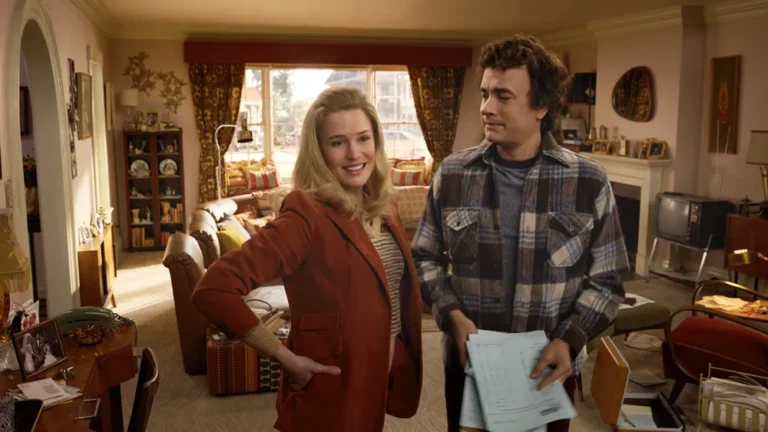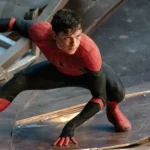Premiering at AFI Fest, the director’s reunion with his ‘Forrest Gump’ stars and screenwriter Eric Roth also features Paul Bettany, Kelly Reilly and Michelle Dockery.
There’s something quintessentially American and straight out of Norman Rockwell about centering a survey of multiple generations around the living room, with idealized themes of home and family reinforced by scenes around the Christmas tree or the dining table, fully extended to accommodate the ever-expanding clan at Thanksgiving. But relatable doesn’t always mean interesting, even if the moments of joy don’t hide the vein of sadness and disappointment that runs through Here.
The same goes for the idea of shooting everything — reaching back to prehistory and right on up through contemporary times — from the same fixed point and using the same wide angle. In terms of technical craft, it’s a daring experiment, but one perhaps less geared to a dynamic narrative than an art installation. Narrowing the frame constricts the storytelling, no matter how many times a Significant Life Moment is shoved up close to the lens for emphasis.
Reuniting with his Forrest Gump screenwriter Eric Roth and stars Tom Hanks and Robin Wright, director Robert Zemeckis takes his visual cues from the source material, Richard McGuire’s 2014 graphic novel of the same name, expanded from a six-page comic strip published in the late ‘80s.
The interdisciplinary artist pushed the boundaries of the comic format by sticking to the exact same location in every panel. Framed through the living room of a house constructed in 1902, his story spans millennia but is focused predominantly on the 20th and 21st centuries. Most of those panels include one or more smaller panes that show the same space at different, non-chronological points in time.
By replicating the graphic novel’s approach three-dimensionally, Zemeckis’ film becomes like a living diorama with insets providing windows into the past and future. Purely from a craft standpoint, it’s mesmerizing, even beautiful, for a while. Until it’s not.
Zemeckis for years now has been fixated on technology and its visual capabilities, to the point where he neglects the rudiments of story and character development. The vignettes here return frequently to the same families at different moments in their lives, but rarely settle in for long enough to sustain narrative momentum or give the characters much depth.
In addition to the self-imposed rigidity of the visual scheme, Here will draw attention — probably in divisive ways — to another technological element that’s even more of a distraction. The director uses a generative AI tool from VFX studio Metaphysic to de-age Hanks and Wright as Richard and Margaret, the characters whose arc, traced from high school through old age, dominates the film. Using archival images of the actors, the program spits out digital makeup that can be face-swapped onto the cast as they perform.
It’s more advanced and convincing than the de-aging in Martin Scorsese’s The Irishman five years ago, allowing for greater elasticity and facial expressivity — even if the physicality of the actors’ bodies isn’t always a perfect match, notably with Hanks in the teenage years. But there’s also something inherently creepy about the process, particularly at a time when many of us are apprehensive about screen acting going down an ever more dehumanizing digital road.
The movie begins with the house under construction. This introduces the concept of panes depicting various elements as they come together, with furnishings from different periods and the first glimpses of people representing various threads that will be elaborated on throughout, some more substantially than others. The opening scenes also plant the central idea in Roth and Zemeckis’ screenplay of houses as receptacles for memory, both lived experience and history.
The frame then jumps way back in time to when the area was a primordial swamp, crawling with dinosaurs — until that landscape is razed in a fiery mass-extinction event, yielding an ice age and then gradually regenerating into a verdant clearing bursting with flora and (CG) fauna. A pair of young Indigenous Americans (Joel Oulette and Dannie McCallum) share a kiss there, before another time leap reveals enslaved people building a colonial mansion.



